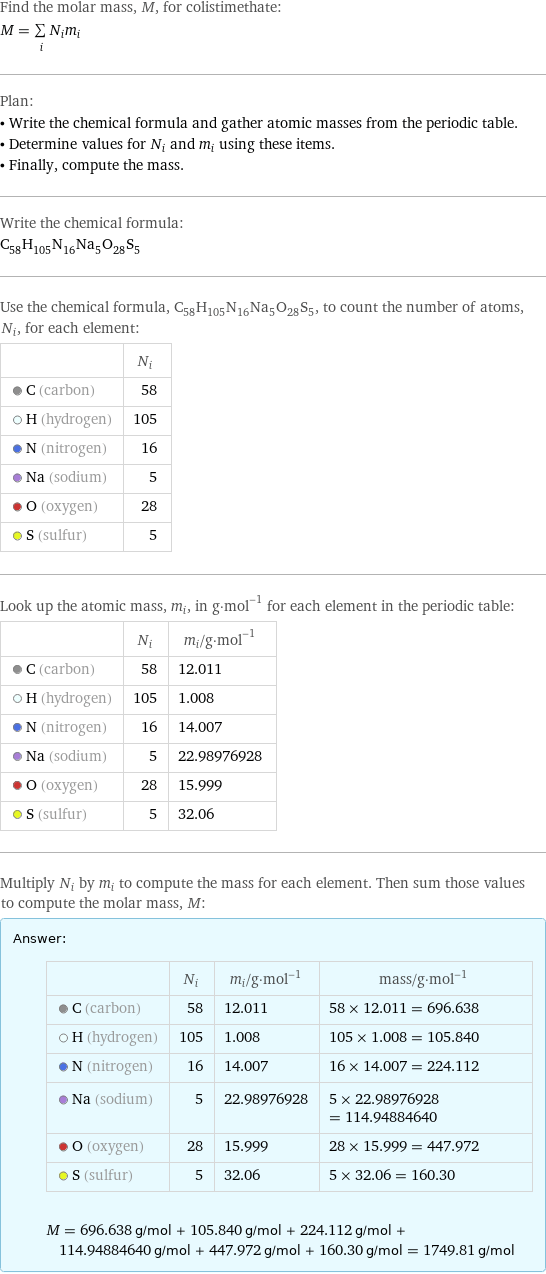Input interpretation

colistimethate | molar mass
Result

Find the molar mass, M, for colistimethate: M = sum _iN_im_i Plan: • Write the chemical formula and gather atomic masses from the periodic table. • Determine values for N_i and m_i using these items. • Finally, compute the mass. Write the chemical formula: C_58H_105N_16Na_5O_28S_5 Use the chemical formula, C_58H_105N_16Na_5O_28S_5, to count the number of atoms, N_i, for each element: | N_i C (carbon) | 58 H (hydrogen) | 105 N (nitrogen) | 16 Na (sodium) | 5 O (oxygen) | 28 S (sulfur) | 5 Look up the atomic mass, m_i, in g·mol^(-1) for each element in the periodic table: | N_i | m_i/g·mol^(-1) C (carbon) | 58 | 12.011 H (hydrogen) | 105 | 1.008 N (nitrogen) | 16 | 14.007 Na (sodium) | 5 | 22.98976928 O (oxygen) | 28 | 15.999 S (sulfur) | 5 | 32.06 Multiply N_i by m_i to compute the mass for each element. Then sum those values to compute the molar mass, M: Answer: | | | N_i | m_i/g·mol^(-1) | mass/g·mol^(-1) C (carbon) | 58 | 12.011 | 58 × 12.011 = 696.638 H (hydrogen) | 105 | 1.008 | 105 × 1.008 = 105.840 N (nitrogen) | 16 | 14.007 | 16 × 14.007 = 224.112 Na (sodium) | 5 | 22.98976928 | 5 × 22.98976928 = 114.94884640 O (oxygen) | 28 | 15.999 | 28 × 15.999 = 447.972 S (sulfur) | 5 | 32.06 | 5 × 32.06 = 160.30 M = 696.638 g/mol + 105.840 g/mol + 224.112 g/mol + 114.94884640 g/mol + 447.972 g/mol + 160.30 g/mol = 1749.81 g/mol
Unit conversion

1.7498 kg/mol (kilograms per mole)
Comparisons

≈ 2.4 × molar mass of fullerene ( ≈ 721 g/mol )

≈ 9 × molar mass of caffeine ( ≈ 194 g/mol )

≈ 30 × molar mass of sodium chloride ( ≈ 58 g/mol )
Corresponding quantities

Mass of a molecule m from m = M/N_A: | 2.9×10^-21 grams | 2.9×10^-24 kg (kilograms) | 1750 u (unified atomic mass units) | 1.7 kDa (kilodaltons)

Relative molecular mass M_r from M_r = M_u/M: | 1750